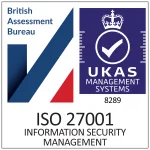
Passwordless authentication lets users log in to apps or systems without entering a password. Instead, you use something else to prove you are who you say you are. That might be a fingerprint, a hardware token, a proximity badge, or even a mobile app prompt. It’s often used alongside Multi-Factor Authentication (MFA) and Single Sign-On (SSO). In theory, it sounds amazing, but it has been out since the early 2000s, so why do passwords still exist? That’s what we’ll cover in this blog.
Most people are juggling more apps than they can remember, and the result is predictable: reused passwords, weak passwords, forgotten passwords… and, yes, the occasional sticky note under the keyboard. All of this makes life easy for cybercriminals.
Attackers don’t exactly have to be creative either. Common techniques include:
Simple username/password setups are inherently vulnerable.
Instead of relying on memorised secrets, passwordless authentication uses something more reliable (and harder for attackers to steal), such as:
Often, passwordless methods are combined with SSO so users can access all their applications with the same token or device. They may also sit inside an MFA setup. For example, you might tap your fingerprint and enter a temporary SMS code if you’re logging in remotely.
Some organisations also use adaptive MFA, which adjusts requirements based on context — like location or device. Logging in from your usual laptop at home? Probably fewer checks. Signing in from a café in another country? Expect more scrutiny.
Passwordless authentication isn’t magic, but it does tackle many of the problems that come with traditional passwords. It can improve security and user experience — as long as it’s implemented thoughtfully and you’re aware of the trade-offs. In conclusion, an enterprise business will most likely use passwordless authentication, but due to the lack of compatibility and cost, many SMEs will stick with strong passwords and MFA.
We hope you’ve liked this blog. Stay tuned for more blogs like this. Stay safe!

